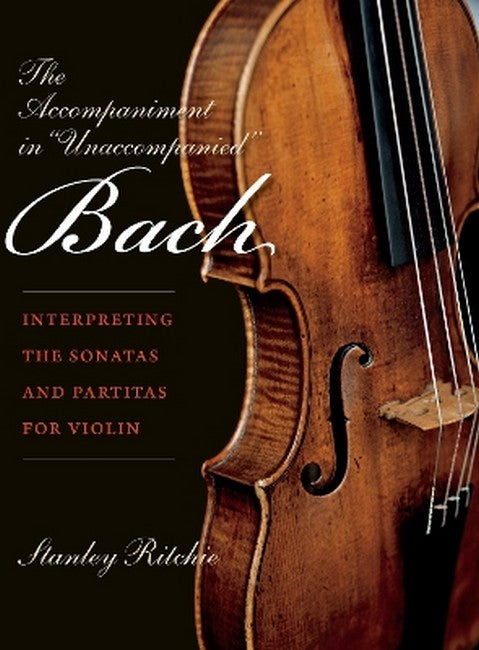Stanley Ritchie is Distinguished Professor of Music at the Jacobs School of Music at Indiana University. He is a leading exponent of Baroque and Classical violin playing and recipient of the Early Music America's highest award, the Howard Mayer Brown Award for Lifetime Achievement in Early Music.
Request Academic Copy
Please copy the ISBN for submitting review copy form
Description
Foreword / Mauricio Fuks Acknowledgements Introduction 1. Principles of Interpretation Notation Polyphony Harmony Metre Dynamics Inequality Fingering Note Length Bow Direction Articulations Ornamentation 2. Dance Forms Allemanda Bouree/Borea Ciaccona Corrente Gavotte Gigue/Giga Loure Menuet Sarabanda/Sarabande Siciliana Double Preludio 3. Analytical Methods and Exercises G-Minor Adagio G-Minor Fuga D-Minor Allemanda 4. The Improvisatory Movements G-Minor Sonata: Adagio A-Minor Sonata: Grave 5. The Fugues G-Minor A-Minor C-Major 6. The Ostinato Movements Partita II: Ciaccona Sonata III: Adagio 7. The Dance-like Movements Bouree and Borea Tempo di Borea B-Minor Corrente D-Minor Corrente Gavotte en Rondeau The Giga The Gigue The Loure The Menuets The Sarabande and Sarabanda The B-Minor Sarabande The D-Minor Sarabanda 8. The Virtuoso Movements G-minor Sonata: Presto B-Minor Corrente - Double The A-Minor Finale The C-Major Allegro assai The E-Major Preludio 9. The Philosophical Movements The Allemanda B-Minor Partita D-Minor Partita 10. The Lyrical Movements The Siciliana A-Minor Sonata: Andante The C-Major Sonata: Largo 11. Right-hand Technique Polyphony Chordal Technique Martele and Spiccato Sautille Bariolage Ondeggiando 12. Left-hand Technique The Role of Vibrato Half-Position Choice of Fingerings Intonation Tuning Last Words Bibliography
Superb! Very inspired material eloquently written. Stanley Ritchie explains each movement of Bach's solo violin Sonatas and Partitas with such clarity and understanding in the thought process without being in any way 'dry'. (Stringendo AUSTA) For any violinist, this book is a practical delight. It deserves to join the great works by Leopold Mozart, Editha Knocker, Leopold Auer, Pierre Baillot, Joseph Szigeti, and their peers, which are on every serious player's shelf. (Fontes Artis Musicae)

